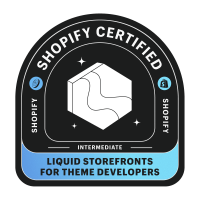What is Search Engine Optimization? #
SEO is the range of methods and techniques used both for on-site and off-site optimization of websites for relevant search inquiries that users type in search engines to find items or information.
The purposes of Search Engine Optimization are to:
- Technically optimize the website so search engine bots can crawl it, find all the web content on the page, and analyze it.
- Optimize a website’s content, so internet search engines find it worthwhile to index it.
There are three significant components of search engine optimization which are critical to satisfying this purpose:
- Technical SEO
- On-Page Components & Content Optimization
- Off-Page SEO (also known as Link Building or PR).
Difference between on-page and off-page SEO #
SEO method can be separated into two different categories: on-page SEO and off-page SEO. Both are important to the success of a Search Engine Optimization campaign, yet they get on totally different sides of the fence.
On-page search engine optimization focuses on optimizing parts of internet website that are within company control. In contrast, off-page Search Engine Optimization concentrates on enhancing the authority of domain through content creation and making backlinks from various other websites.
There are two major containers that search engines look at when evaluating website compared to other websites on the web. On-page search engine optimization considers what an website (or landing page) is all about with well-written and optimized content with desired keywords, while off-page SEO considers how reliable and popular the website is. In other words, what the website rank for is primarily identified by on-page aspects, while just how high depends mainly on off-page SEO.
What are keywords? #
SEO search phrases are the keywords and expressions in content that make it possible for individuals to locate websites using the online search engine. An internet website that is well optimized for search engines “talks the same language” as its potential site visitor base with keyword phrases for SEO that aid connect searchers to the website. Keywords are one of the main elements of Search Engine Optimization. Keywords will aid a website’s rank over competitors. This is why creating a listing of search phrases is just one of the first and most important steps in any SEO initiative.
What is Technical SEO? #
Technical SEO is a subcategory of SEO that entails enhancing the facilities of a website so it can be conveniently crawled and indexed by search engines. It takes care of a website’s technical parts, such as the sitemaps, web page speed, link structure, schema, website navigating, and more. Website style and content are pointless if customers can not access or browse websites.
Technical SEO is important because it aids online search engines in crawling websites and also rates it on the search results page to start with. Technical SEO involves all the parts that make a website quick, mobile-friendly, easy to navigate, easy to use, and functional.
What is a sitemap xml file? #
A sitemap is a method that makes it possible for a web admin to educate the online search engine of a site’s available links. It is essentially a map of a website, so it can be understood by indexing crawlers (such as Googlebot, the Bingbot and so on).
Created under XML or txt style, a sitemap collects one website’s URLs alongside information such as; its latest adjustment date, the update frequency, and its significance in connection with the various other pages from the same website. Even though there are various layouts of sitemaps, they all have to include not greater than 50 000 links. If the data consists of more than 50 000 URLs, the sitemap should be splitted into numerous sitemaps.
What is a robots txt file? #
A robots.txt document is a collection of directions for robots. This document is included in the resource files of the majority of websites. Think of a robots.txt document as being like a “Standard procedure” indication posted on the wall surface at a health club, a bar, or a community center: The indicator itself has no power to enforce the noted policies. However, “good” clients will comply with the regulations, while “bad” ones are likely to break them and get themselves outlawed.
A bot is an automated computer program that connects with websites and applications. There are good robots and bad robots, and also one type of great bot is called a web spider bot: these robots “crawl” websites and index the content to show up in search engine results. A robots.txt file helps take care of the tasks of these internet crawlers so that they don’t index pages that aren’t implied for public view.
What are canonical tags? #
Canonical URLs tell search engines to be clear to point to the reference URL (unique) to avoid duplicate content. If the crawler can access the same content with multiple URLs, choose the preferred version and put the canonical in other pages pointing at the prior version to let the search engine know to index only the canonical version.
How do search engines work? #
An Internet Search Engine is a specific program made to send out a crawler to fetch as many records on the web as feasible. An additional program, called an indexer, then reviews these web pages and produces an index based on words on each page. Each online search engine uses an algorithm to build its index so that, ideally, one of the most relevant results is revealed on the search engine result page for each and every keyword.
We can discover a selection of Search Engines throughout the Internet. A few of the most commonly used search engines are Google, Yahoo, Bing, Yandex, and Baidu. This article will mainly concentrate on Google, considering that it is the favored search engine for many e-commerce business owners. In addition, other search engines tend to adhere to Google’s lead on new features as well as growth.
Latest SEO trends #
Search Engine Optimization is a constant renewing area. Practices are constantly advancing and improving, so it is important to follow trends.
Vocal search #
It is now feasible to directly ask smartphone inquiries to find something. 20% of internet customers use Alexa, Siri, and Cortana voice assistants. It is one of the top trends to follow in 2022, which is broadening thanks to the prompt answers that singing aides give. This is why Search Engine Optimization should now concentrate on a question-oriented key phrase, that is, to claim, on the specific language or phrasing made use of by people in everyday life.
AMP #
This project launched in 2015 proved itself, given that 4 billion web pages were released on 25 million domains, utilizing Accelerated Mobile Pages modern technology. Their loading time is 30 times faster than regular mobile pages.
SERP features/Quick responses #
Similarly, as vocal searches do, it includes fragments and quick answers shorter than when Google responds to a question. Features fragments correspond to the web content shown on the Search Engine Result Page (SERP). They can sometimes directly answer questions on the outcome web page, conserving time, so the customer does not even need to click a web link.
Similarly, as vocal searches do, it includes fragments and quick answers shorter than when Google responds to a question. Features fragments correspond to the web content shown on the Search Engine Result Page (SERP). They can sometimes directly answer questions on the outcome web page, conserving time, so the customer does not even need to click a web link.
The more content is present on a web page, the more likely it will have a high ranking. But this must never be at the expense of quality, which will certainly constantly dominate. To do so, the company should improve its meta-description tags to boost SEO, boost the urge to click, and boost CTR (click-through rate). Additionally, the short article needs to gain from a solid sharing rate on social media to diversify and increase the sources raising the traffic on the given content. Finally, it would help to recognize when to favor long-tail keywords over common keyword phrases.
Do you want to learn more about e-commerce? Continue reading about → Conversion optimization.

